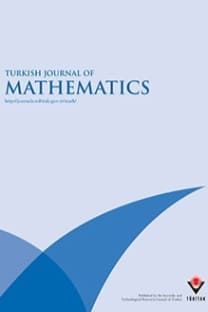Axes in non-associative algebras
Axes in non-associative algebras
___
- [1] Albert AA, Power-associative rings. Transactions of the Amererican Mathematical Society 1948; 64: 552–593.
- [2] De Medts T, Peacock SF, Shpectorov S, and Van Couwenberghe M, Decomposition algebras and axial algebras. Journal of Algebra 2020; 556: 287–314.
- [3] Hall JI, Rehren F, Shpectorov S, Primitive axial algebras of Jordan type, Journal of Algebra 2015; 437: 79–11.
- [4] Hall JI, Segev Y, Shpectorov S, Miyamoto involutions in axial algebras of Jordan type half, Israel Journal of Mathematics 2018; 223: 261–308.
- [5] Rowen L, Segev Y, Axes of Jordan type in non-commutative algebras, submitted. J. Algebra Appl.
- [6] Schafer RD, non-commutative Jordan algebras of characteristic 0, Proceedings of the American Mathematical Society 1955; 6: 472–475.
- [7] Shestakov, I, Trushina, M, Irreducible bimodules over alternative algebras and superalgebras. Trans. Amer. Math. Soc. 2016; 368: 4657–4684.
- ISSN: 1300-0098
- Yayın Aralığı: 6
- Yayıncı: TÜBİTAK
Belhadj KARIM, Anass LAMAIZI, Abdellah ZEROUALI, Omar CHAKRONE
On the extension of Hermite–Hadamard type inequalities for coordinated convex mappings
Dilşatnur KILIÇER, Mehmet Zeki SARIKAYA
A semisymmetric metric connection on almost contact B−metric manifolds
Affine Ricci solitons associated to the Bott connection on three-dimensional Lorentzian Lie groups
An exponential equation involving k-Fibonacci numbers
Alain TOGBÉ, Alioune GUEYE, Salah Eddine RIHANE
Linear stability of periodic standing waves of the KGZ system
Fatih HUNUTLU, Sevdzhan Ahmedov HAKKAEV
Higher cohomologies for presheaves of commutative monoids
Pilar CARRASCO, Antonio M. CEGARRA
Scattering and characteristic functions of a dissipative operator generated by a system of equations
Elgiz BAYRAM, Kenan TAŞ, Ekin UĞURLU
A general double-series identity and its application in hypergeometric reduction formulas
